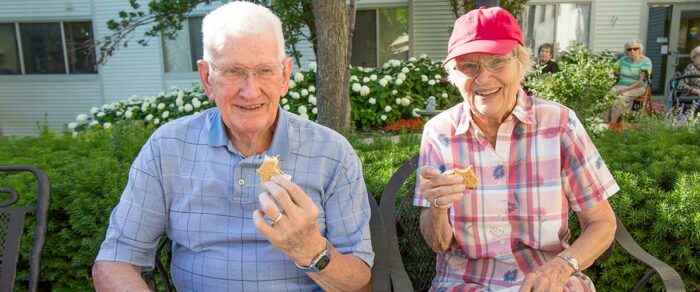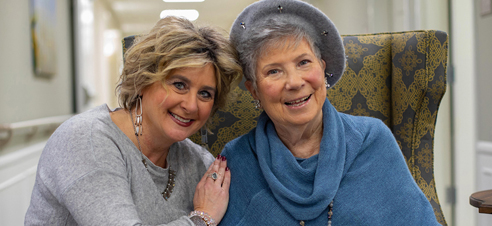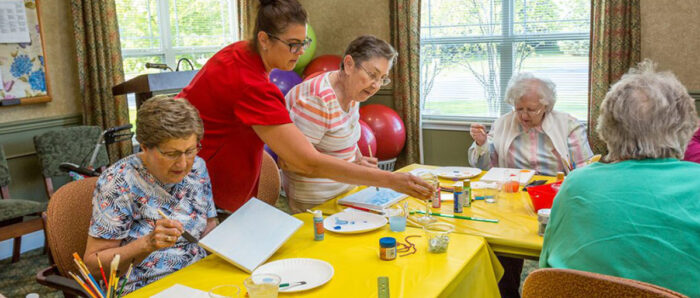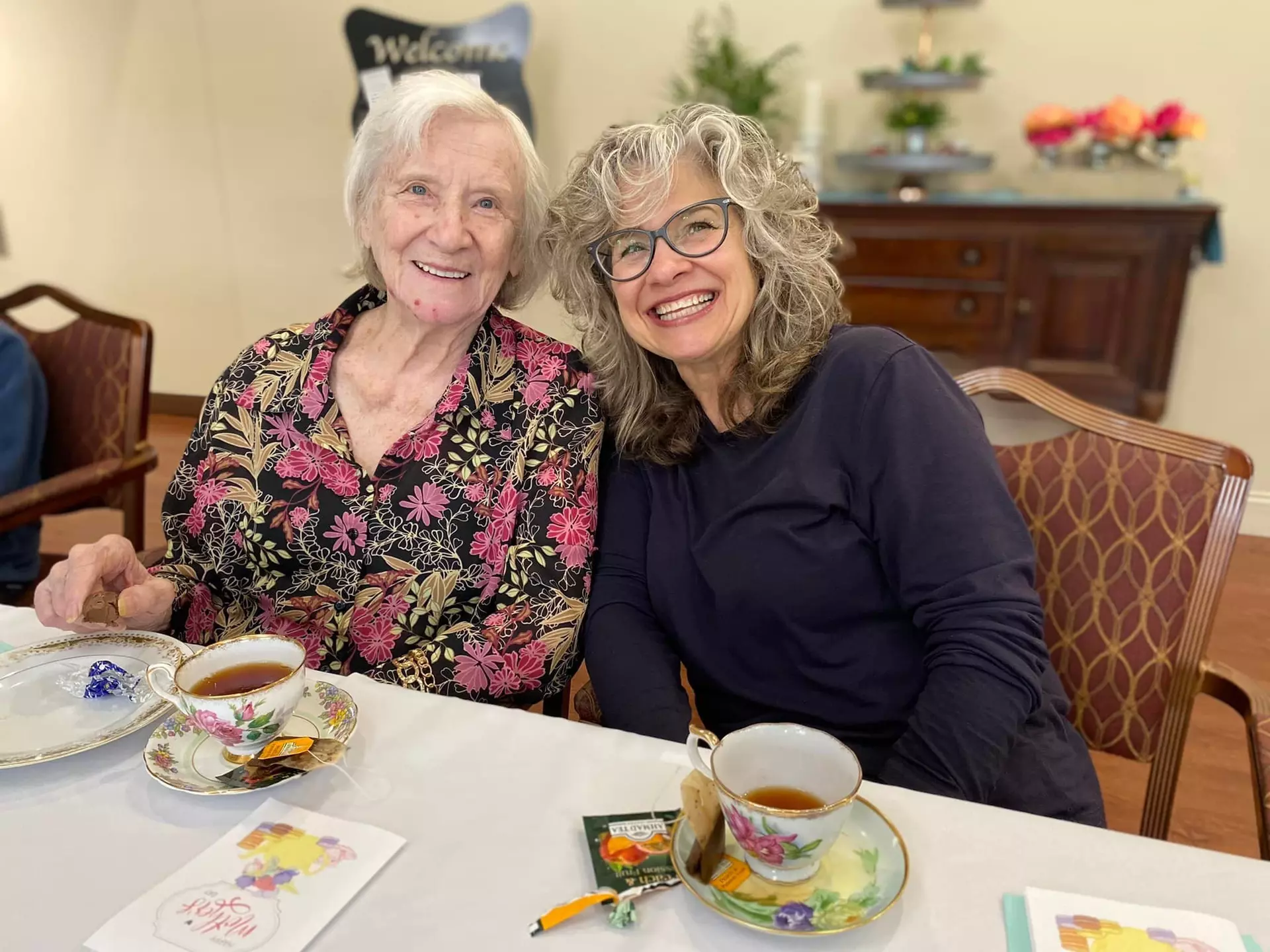Independent living is an excellent option for older adults who can manage most of their daily tasks without much support. However, as we age, our needs may change, and the time may come when we need extra help.
If someone you love could benefit from help with activities of daily living (ADLs), like eating, bathing, and dressing, an assisted living community may be worth considering. But whether you’re considering assisted living for yourself or a family member, it can sometimes be tricky to know when to make the move.
In this blog, we’ll discuss some important signs that may indicate when to move from independent living to assisted living. We’ve also included a few practical tips to help you make an informed decision about the future for you or your family member.
Signs It’s Time to Transition to Assisted Living
Most senior living communities do not have a strict age requirement, and the decision about when to move into an assisted living community depends on an individual’s specific needs and circumstances. However, there are some common signs that may indicate your loved one could use more help, including:
Difficulty with Activities of Daily Living (ADLs)
It’s normal for older adults to start needing assistance with certain tasks as they age. Observe your loved one’s routine and make a note of what tasks they could use help with. If they’re beginning to struggle with activities of daily living (ADLs), like bathing, continence, and mobility, they may likely benefit from additional support.
Declining Physical Health
Some seniors may experience significant health changes due to the natural effects of aging. These challenges can make it difficult for individuals to perform everyday tasks independently or live safely on their own. If you’re noticing a decline in your parent’s health, an assisted living community can provide a secure and comfortable environment for them.
Social Isolation
Our social circles tend to shrink as we age, and it’s common for seniors to feel lonely, particularly if they have trouble leaving the house. Numerous studies have shown that a lack of social interaction can be particularly harmful to older adults. If your aging loved one is frequently spending more time alone or no longer engaging in things they once enjoyed, it might be worth looking into their living situation.
Frequent Forgetfulness
We’ve all forgotten where we put our keys or misplaced our glasses from time to time, but if your aging parent is becoming unusually forgetful, it could be a sign of cognitive decline. In some cases, problems with memory can impact daily life and even make it unsafe for individuals to live safely alone. For instance, if your family member is regularly leaving the stove on, skipping medication, or getting lost in familiar places, it may be worth considering additional support.
Mobility Issues
Many seniors experience challenges with mobility due to physical or health limitations. Age-related conditions like arthritis, weakened muscles, and osteoporosis often make it harder for older adults to move around safely. Some of these changes can significantly increase the risk of accidents and falls, which are a major safety concern for many older adults. For instance, if you notice your parent is frequently using a walker or struggling to get in and out of bed, it may be an indication that they could benefit from additional support.
Unexplained Weight Loss
Unexplained weight loss can be a sign of a serious underlying health issue or poor nutrition. If your loved one is suddenly losing weight, they could be skipping meals, forgetting to eat, or perhaps unable to shop for groceries on their own. In circumstances like these, an assisted living community could be beneficial.
Key Benefits of Assisted Living
Most individuals move into assisted living when they require additional help. However, that’s often not the only reason. Assisted living offers a host of other important benefits, including:
- Personalized Support: Residents in assisted living communities have unique needs. Some people may need assistance with light housekeeping, while others may require more extensive support. Most communities offer a wide range of assistance options to help support individuals with various health and lifestyle needs.
- Nutritious Meals and Snacks: A healthy and balanced diet is important for overall health and well-being. Assisted living communities provide nutritious meals and snacks for residents, and they are specifically designed to accommodate the dietary requirements of older adults.
- Social Interaction: Most assisted living communities offer plenty of socialization opportunities to encourage residents to connect with others. These typically include planned events and outings, book clubs, game nights, and much more.
- Convenient Amenities: Some communities offer luxury options on-site to help accommodate residents with different tastes and preferences. These can include salons and barbershops, golf courses, swimming pools, fitness centers, transportation to appointments, and more to help make residents’ lives more enjoyable.
- Safety and Security: Safety is often a key consideration for many older individuals and their families. In assisted living communities, caregivers are usually available around the clock to provide help when needed. Additionally, most assisted living communities are equipped with safety and security features, like nonslip flooring, grab handles, and secure entrances, to help residents feel safe and move around more easily.
- Life Enrichment Opportunities: Many assisted living communities offer a wide range of life enrichment activities to help promote residents’ physical, mental, and social well-being. These can include arts and crafts, brain-healthy games, gentle exercises, and more to help residents live healthy and active lives.
A Step-by-Step Transition Plan
Whether you’re considering additional support for yourself or a loved one, the transition to assisted living can be a significant change for everyone involved. It’s normal to experience a wide range of emotions during this time. Please know you’re not alone. We’re here to help guide you every step of the way. Here are a few practical strategies to help ease the transition from independent living to assisted living:
1. Determine Support Needs
The first step when deciding when to move from independent living to assisted living is to assess the level of support needed. Take time to evaluate current support needs. Understanding the level of assistance required can help you determine the best fit. For example, if you or your loved one need help with activities like bathing, eating, or grooming, it’s important to find a community that can provide that support.
If you’re helping your aging parent transition to assisted living, it’s always a good idea to involve other family members in the conversation. Listen to everyone’s thoughts and ideas, and ask for support if needed.
2. Research Assisted Living Options
Once you understand the level of support needed, it’s time to find a community that feels right, both for you and your loved one. Start by touring a few options nearby. This gives you and your family member a great opportunity to get a feel for the atmosphere and ask important questions, like: What qualifications do the employees have? What are the costs, and what payment options and activities are available?
Take note of how the employees interact with the residents to see if they are friendly, compassionate, and attentive. If possible, talk to some residents to learn more about their experience in the community.
3. Prepare for the Move
After deciding a move from independent living to assisted living is right, set aside enough time to help your loved one organize their belongings. If moving to a smaller space, they may need to decide what to bring. Consider selling or donating things they no longer need.
Although you may need to help them reduce some items, it’s important to bring along familiar things that will help make their new place feel like home, like family photos, favorite books, or other special keepsakes.
4. Making the Move
After conducting all the necessary research and planning, it’s finally time to make the move. It’s completely normal for both you and your loved one to feel a mix of emotions, from excitement to sadness. You don’t have to do everything alone — many friends and family members would be happy to help with this process. You can also hire professional movers if necessary.
5. Settling In
It may take some time for your family member to adjust to their new surroundings, and that’s okay. Gently encourage them to join in community activities and interact with other residents. The more they get involved, the more likely they are to feel comfortable in their new home.
After the move, it’s important to remain involved. Visit your loved one as often as possible and stay in touch. You can use video calls to check in and see how they’re doing. Ask about their new home, the food, and how they feel about the community. Your emotional support and reassurance can help them feel valued and comfortable in their new environment.
Common Concerns and How to Address Them
Transitioning to assisted living is a big step, and it’s natural for seniors and their families to have questions. Here are a few common concerns, as well as some ways to address them:
Fear of Losing Independence
Seniors value their independence, and after living on their own for many years, the idea of needing assistance can feel uncomfortable at first. Acknowledge these feelings and gently reassure your loved one that they will still have the freedom to make choices about their daily routines, all while receiving the best possible support for their needs.
Boredom and Isolation
Another concern many seniors and their families have is boredom and isolation. Leaving behind established relationships and routines can be tough. The good news is that assisted living offers a wide range of fun activities, including group exercises, art classes, game nights, and much more.
Anxiety About the New Environment
Moving to a new environment can cause feelings of anxiety, especially when the move happens quickly. This can make it even harder for your loved one to adjust. If possible, try to tour the community beforehand. Becoming familiar with the new environment can help provide some reassurance and make your family member feel more comfortable with their new surroundings.
Feeling Like a Burden to Others
Some seniors may feel like they’re becoming a burden to others by needing additional support. Others may feel guilty about the added cost of care. It’s important to remind your loved one that needing help is completely normal and that transitioning to assisted living is a positive step toward ensuring they receive the care they deserve.
Fear of Losing Control Over Their Life
Your loved one may worry that they will no longer have the freedom to make decisions about their routines, activities, or even how they spend their day. For many seniors, these concerns can make the idea of moving to assisted living even more overwhelming. Gently reassure them that they will still have as much control as possible, including setting their own daily schedules, choosing activities, and being involved in decisions about their care.
StoryPoint Group Is Here for You and Your Loved One
At StoryPoint Group communities, we understand the challenges that families go through to find the best support for their loved ones. You’re not alone. We’re here to help guide you and your family member at every step of your journey.
If you or someone you love could benefit from additional assistance, call us today at 1-844-275-9990 or schedule a tour of a StoryPoint Group community near your location. We can’t wait to get to know you!













